Whether you celebrate Thanksgiving or not, Black Friday has turned into a global event. Here’s a first look at what this year has in store for us.
Motorola launched the Edge 40 Neo a few months after the regular Edge 40. Oddly enough, the price of the new model is dropping faster – not that we’re complaining. This sub-€300 phone has a 6.55-inch 144Hz 10-bit curved display (FHD+ resolution) and a Dimensity 7030 chipset. It has an IP68 rating and is available in a selection of Pantone colors. It has a 50 MP main camera (1/1.5, OIS) and a 13 MP ultra-wide camera, as well as a 5,000 mAh battery with 68W charging.

The regular Motorola Edge 40 is a slightly better phone, at least that’s how it was when their prices were close. Get the Dimensity 820 chipset instead, and the battery gains 15W of wireless charging, although it also loses capacity (it’s down to 4,400 mAh). At these prices, choosing the Neo over the Edge 40 is a no-brainer.

If you’re looking for something more premium, the Motorola Edge 40 Pro features a Snapdragon 8 Gen 2 and a 6.67-inch 10-bit 165Hz curved display. It has a 50MPP (1/1.55”, OIS) main camera, a 50MP ultra-wide camera, and even a 12MP 2x portrait camera. The 4,600mAh battery isn’t large, but it supports 125W wired fast charging (in our tests it got up to 83% in 15 minutes), there’s also 15W wireless charging for when you want to go slow.

The Xiaomi Poco F5 is a fan favorite for a reason: the Snapdragon 7+ Gen 2 is one of the best mid-range chips we’ve ever seen. The 6.67-inch 120Hz 12-bit display is also nothing to complain about. The battery has a capacity of 5,000 mAh and 67W fast charging.

Once again there is a Pro model that does better. It upgrades the 12-bit display to QHD+ resolution (versus FHD+) and the chipset to a Snapdragon 8+ Gen 1. Additionally, the battery gets 160 mAh more capacity and gets support for 30W wireless charging. Unfortunately, the camera has not been updated. There’s also a 64MP main camera (a small 1/2″ sensor, but it has OIS), as well as an 8MP ultra-wide one.

The Nothing Phone (2) is the company’s second phone and the first with a flagship chip, albeit the older Snapdragon 8+ Gen 1. It featured a larger 6.7-inch FHD+ 120Hz LTPO display and a larger 4,700 mAh battery with 45W wired and 15W wireless charging.
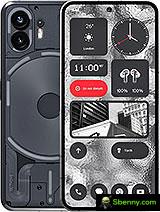
By “bigger” we mean compared to its predecessor, the Nothing Phone (1). It costs around €240 less and has the same camera: 50 MP main (1/1.56”, OIS) and 50 MP 114° ultra wide angle. It has a smaller 6.55″ 120Hz non-LTPO OLED display and the less powerful Snapdragon 778G+. The 4,500mAh internal battery supports 33W wired charging and 15W wireless charging. While not as capable as the Phone (2), this offers better value for money.

The one-two theme continues with Samsung. The Galaxy A54 and A34 are perhaps boring choices: they come from a familiar brand, with a proven track record of software support (these two will receive 4 OS updates and 5 years of security patches), plus they hover just above the € mark 300. For a direct comparison, see our A34 and A54 post.
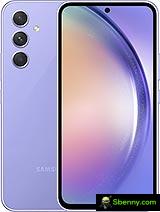
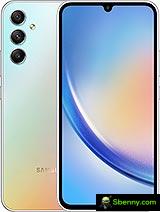
Subsequently, the Motorola Moto G84 and Moto G54. Both are 5G phones with 6.5” 120Hz displays – a 10-bit OLED for the G84 and an IPS LCD for the G54, so pick your poison. Both have similar 50MP network cameras (with a larger sensor on the G84), but neither can record 4K video. There’s also an 8MP ultra-wide on the back. The G84 has the larger battery, 6,000 mAh versus 5,000 mAh, and is powered by a Dimensity 7020 instead of the G84’s Snapdragon 695. Of course the G54 is a little cheaper.
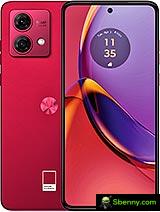
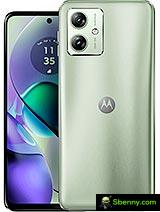
The Sony Xperia 5 V is decreasing in price but is still quite expensive. The Mark 4 is cheaper and arrived before Sony’s strange decision to ditch the camera: even though it’s only a 60mm lens, the Xperia 5 IV has an advantage over the newer model. However, the 2023 phone has a larger and higher resolution main sensor, 48 MP 1/1.35” versus 12 MP 1/1.7”. And it has the better chipset, the Snapdragon 8 Gen 2 compared to the original 8 Gen 1.
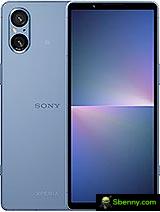

If they’re too expensive for you, but Sony’s 3.5mm headphone jack and microSD slot formula appeals to you, take a look at the Xperia 10 V. It just received Android 14 earlier this week and boasts a 48MP main sensor (a small 1/2”, but there’s OIS), an 8MP ultra-wide camera, and a basic 8MP 2x portrait camera. The 6.1-inch FHD+ display has a cinematic 21:9 aspect ratio, but only offers a 60Hz refresh rate. The 10V is one of the best phones for battery life we’ve ever tested.
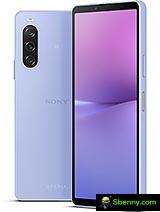
Let’s go back to Motorola for a moment: its foldable flagship, the Razr 40 Ultra, has dropped to less than 900 euros. It has a fast 6.9″ 165Hz LTPO AMOLED display inside and a 3.6″ cover display that’s almost as fast at 144Hz. It’s powered by the Snapdragon 8+ Gen 1 and a 3,800mAh battery with 30W wired and 5W wireless charging. The camera is not particularly impressive, even by foldable standards: a 12MP main one (with a tiny 1/2.55” sensor, although it has OIS) and a rather narrow 13MP 108° ultra wide-angle lens.
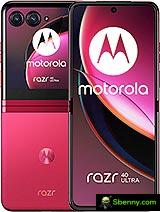
Have you already purchased an OLED Steam Deck? If not, consider the Asus ROG Ally. It has a 7-inch IPS LCD display with more pixels (1,920 x 1,080 px) and a higher refresh rate of 120 Hz. The OLED deck has a larger 7.4” display but is a 1,280 x 800px 90Hz panel . The ROG Ally has the more powerful silicon, but to get it you’ll have to choose the AMD Ryzen Z1 Extreme version (the Extreme model is preferable over the Z1 unless you really have an extra €100).







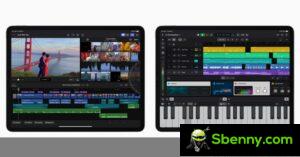
Start a new Thread